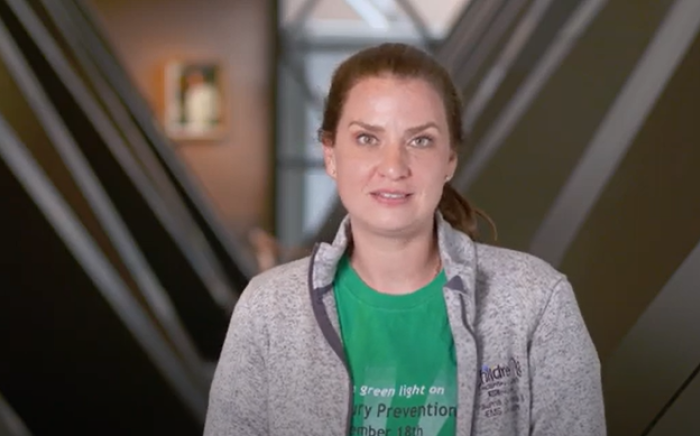Overview
A hydrocele a buildup of fluid in the thin pouch (tunica vaginalis) that holds the testes in the scrotum. Up to 1 in 10 baby boys have a hydrocele at birth. In most cases, it goes away without treatment within the first year.
How to say it
HY-droh-seel
Causes
In a baby growing in the womb, the tunica vaginalis is formed in the baby’s belly (abdomen) and then moves into the scrotum with the testes. After the pouch is in the testes, it seals off from the abdomen. But in some cases this doesn’t happen normally. It can then cause a hydrocele.
There are 2 types of hydrocele:
- Communicating hydrocele. This type of hydrocele is caused when the tunica vaginalis does not close completely. A small amount of abdominal fluid can flow in and out of the thin pouch. The amount of fluid changes throughout the day and night. This changes the size of the hydrocele.
- Noncommunicating hydrocele. This type of hydrocele may be present at birth. It usually goes away on its own with no treatment within 1 year. But this type of hydrocele in an older child may be a sign of other problems. These include infection, twisting of the testes (torsion), or a tumor.
Symptoms
Symptoms can occur a bit differently in each child. They can include:
- A lump or swelling that is smooth and not painful
- A scrotum that gets smaller at night while lying flat, and bigger during activity
The symptoms of a hydrocele can be like other health conditions. Make sure your child sees his healthcare provider for a diagnosis.
Diagnosis
The healthcare provider will ask about your child’s symptoms and health history. He or she will give your child a physical exam.
The healthcare provider may need to check if the mass is a hydrocele or an inguinal hernia. An inguinal hernia is a weak area in the lower belly wall (inguinal canal) where intestines may bulge. To check for this problem, your child may have an ultrasound study. This is a painless imaging test that uses sound waves to look at tissues in the body.
The healthcare provider may also shine a strong light through one side of the scrotum, and look at the scrotum from the other side. This is called transillumination. This will help show if the problem is a hydrocele or a hernia.
Treatment
Treatment will depend on your child’s symptoms, age, and general health. It will also depend on how severe the condition is.
A noncommunicating hydrocele usually goes away on its own by the time a child reaches his first birthday. The fluid is reabsorbed into the body from the pouch.
A hydrocele that lasts longer than 12 to 18 months is usually a communicating hydrocele. This usually needs surgery to prevent an inguinal hernia. The surgery is done by making a small cut (incision) in the groin. The provider drains the fluid and closes off the opening to the tunica vaginalis.
Talk with your child’s healthcare provider about the risks, benefits, and possible side effects of all treatments.
Complications
After the hydrocele goes away or is treated, long-term problems are rare.
When to Call a Healthcare Provider
Call the healthcare provider if your child has:
- A large hydrocele that is firm
- Painful scrotum
- Other symptoms that don’t get better, or get worse
- New symptoms
Key Points
- A hydrocele a buildup of fluid in the thin pouch that holds the testes in the scrotum.
- Up to 1 in 10 baby boys have a hydrocele at birth. In most cases, it goes away without treatment within the first year.
- There are 2 types of hydrocele. A hydrocele that lasts longer than 12 to 18 months is usually a communicating hydrocele. This usually needs surgery to prevent an inguinal hernia.
- A noncommunicating hydrocele may be present at birth. It usually goes away on its own with no treatment within 1 year.
- Symptoms can include a lump or swelling that is smooth and not painful, or a scrotum that changes size.
- After the hydrocele goes away or is treated, long-term problems are rare.
Next Steps
Tips to help you get the most from a visit to your child’s healthcare provider:
- Know the reason for the visit and what you want to happen.
- Before your visit, write down questions you want answered.
- At the visit, write down the name of a new diagnosis, and any new medicines, treatments, or tests. Also write down any new instructions your provider gives you for your child.
- Know why a new medicine or treatment is prescribed and how it will help your child. Also know what the side effects are.
- Ask if your child’s condition can be treated in other ways.
- Know why a test or procedure is recommended and what the results could mean.
- Know what to expect if your child does not take the medicine or have the test or procedure.
- If your child has a follow-up appointment, write down the date, time, and purpose for that visit.
- Know how you can contact your child’s provider after office hours. This is important if your child becomes ill and you have questions or need advice.












